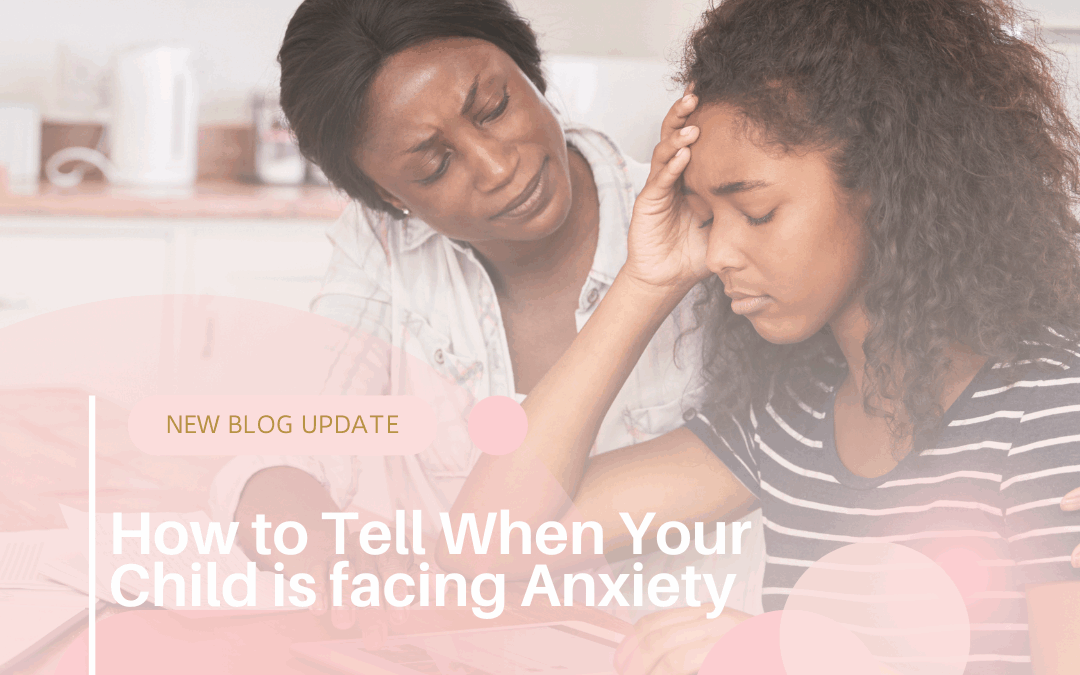It’s completely normal for children to feel worried from time to time. Whether it’s nerves before a test, shyness in a new environment, or fear of the dark, some level of anxiety is part of healthy development.
But what happens when those worries grow bigger, more persistent, and start interfering with your child’s everyday life? As a parent, it can be hard to know when to step in—or when it’s time to get professional help.
Here’s how to tell the difference between typical childhood worry and anxiety that needs attention.
🌱 Normal Worry vs. Clinical Anxiety
Worry is occasional, specific, and manageable.
For example, your child might worry about a spelling test, but once it’s over, the fear fades.
Clinical anxiety is excessive, persistent, and disruptive.
It lingers long after the stressor is gone—or may not be linked to anything specific at all.
🚩 Signs Your Child’s Anxiety May Be More Than Just Worry
1. Avoidance Behaviors
Is your child:
-
Constantly trying to stay home from school?
-
Avoiding birthday parties, social events, or sleepovers?
-
Refusing to participate in activities they used to enjoy?
Avoidance is one of the most common signs of anxiety. While it might seem like a phase, consistent withdrawal from age-appropriate experiences can be a red flag.
2. Physical Complaints With No Medical Cause
Children often express emotional distress through their bodies. You might hear:
-
“My stomach hurts.”
-
“I feel sick.”
-
“I have a headache.”
If these complaints happen frequently—especially before school or social activities—it could be anxiety in disguise.
3. Sleep Struggles
Many anxious children have:
-
Trouble falling asleep
-
Frequent nightmares
-
Middle-of-the-night wakeups
-
Fears of being alone in the dark
Occasional sleep issues are normal, but chronic disruption may indicate something deeper.
4. Excessive Reassurance-Seeking
You may hear your child ask:
-
“Are you sure everything will be okay?”
-
“What if something bad happens?”
-
“Do you promise nothing bad will happen to you?”
Anxious kids often seek constant reassurance as a coping strategy—but it never really satisfies them. The cycle quickly becomes exhausting for everyone.
5. Big Emotional Reactions to Small Problems
All kids have meltdowns sometimes. But if your child:
-
Reacts with intense fear, tears, or panic to small changes
-
Has explosive outbursts over minor issues
-
Struggles to calm down even after the “threat” is gone
…their emotional system might be in overdrive due to underlying anxiety.
🧠 Types of Childhood Anxiety to Know
Some common anxiety disorders in children include:
-
Generalized Anxiety Disorder (GAD): Chronic worry about school, family, health, or the future
-
Social Anxiety: Intense fear of embarrassment or judgment in social settings
-
Separation Anxiety: Extreme distress when apart from parents or caregivers
-
Panic Disorder: Sudden, intense episodes of fear with physical symptoms
-
Phobias: Irrational fears of specific objects or situations (e.g., dogs, elevators, vomiting)
If your child’s fears fall into one of these patterns and persist for more than a few weeks, it’s time to explore support options.
💬 When to Seek Help
You don’t have to wait for things to get “bad enough” to get help. Consider talking to a mental health professional if your child’s anxiety:
-
Interferes with daily routines
-
Affects school performance or friendships
-
Causes distress that doesn’t seem age-appropriate
-
Impacts your family’s overall well-being
Early support can make a huge difference—not just for your child’s anxiety, but for their lifelong emotional resilience.
💛 Final Thoughts: You’re Not Alone
If you’re noticing signs of deeper anxiety in your child, know this: it’s not your fault, and you’re not failing as a parent. Anxiety is common—and treatable.
With support, tools, and understanding, your child can learn how to manage anxiety, not be controlled by it.
Need guidance on where to start?
At Central Valley Family Therapy, we offer compassionate, evidence-based therapy for children and teens. Our team helps families build tools for emotional regulation, confidence, and connection.
Contact us today to learn more.


Recent Comments